Here some of our own researchers working in the Pierre Auger Collaboration help detect cosmic rays.
Please take some time to read it, it is very interesting and has some great photos and explains how to detect cosmic rays.
read it here
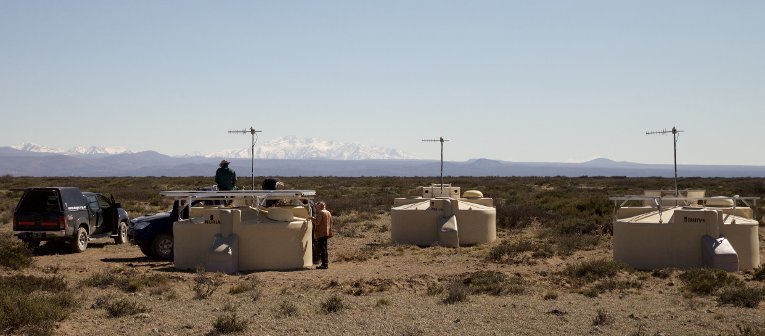
Here some of our own researchers working in the Pierre Auger Collaboration help detect cosmic rays.
Please take some time to read it, it is very interesting and has some great photos and explains how to detect cosmic rays.
read it here

 2017 Michigan Tech Grad and former Physics Laboratory Specialist Benjamin Manning (pictured left) has been named Georgia Teaching Fellow by the Woodrow Wilson National Fellowship.
2017 Michigan Tech Grad and former Physics Laboratory Specialist Benjamin Manning (pictured left) has been named Georgia Teaching Fellow by the Woodrow Wilson National Fellowship.
Click here to read more.
Congratulations Ben!

Greg Odegard (MEEM) is the principal investigator on a project that has received a $1,000,000 research and development grant from the National Aeronautics and Space Administration. Ravi Pandey (Physics), Julia King (MEEM) and Trisha Sain (MEEM) are Co-Pis on the project titled “Institute for Ultra-Strong Composites by Computational Design (US-COMP).”
This is the first year of a five-year project potential totaling $14,999,995.
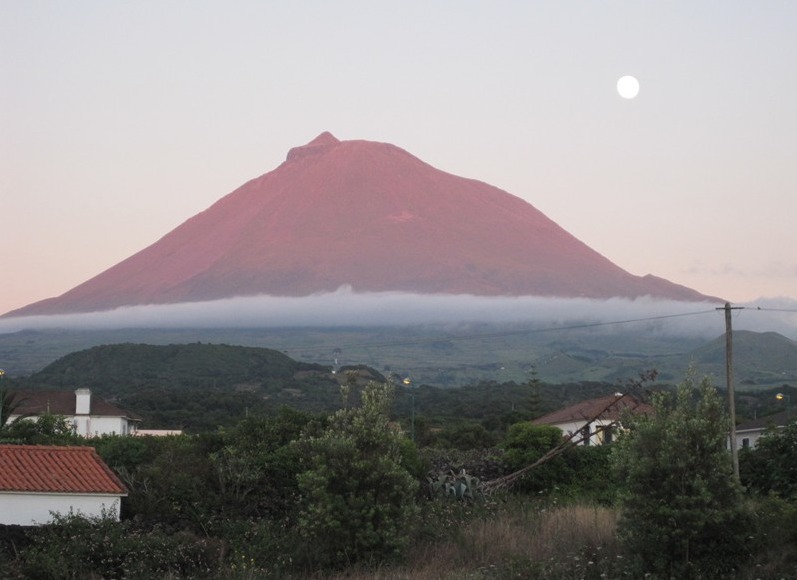 Bo Zhang (2015), currently a research scientist at the National Institute of Aerospace in Hampton, VA, and co-authors published a paper, “Ten-year chemical signatures associated with long-range transport observed in the free tropophere over the central North Atlantic” in Elementa Science of the Anthropocene Journal.
Bo Zhang (2015), currently a research scientist at the National Institute of Aerospace in Hampton, VA, and co-authors published a paper, “Ten-year chemical signatures associated with long-range transport observed in the free tropophere over the central North Atlantic” in Elementa Science of the Anthropocene Journal.
Ten years of observations of trace gases at Pico Mountain Observatory (PMO), a free troposphere site in the central North Atlantic, were classified by transport pattern using the Lagrangian particle dispersion model FLEXPART.
The classification enabled identification of trace gas mixing ratios associated with background air and long-range transport of continental emissions, which were defined as chemical signatures. Comparison between the chemical signatures revealed the impacts of natural and anthropogenic sources, as well as chemical and physical processes during long transport, on air composition in the remote North Atlantic.
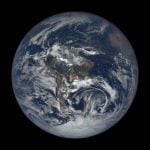
One million miles from Earth, a NASA camera is capturing unexpected flashes of light reflecting off our planet, and Alex Kostinski has helped identify them as ice particles high in the atmosphere. NASA, Health Medicine Net and Astrobiology Web have published news stories about the phenomena and the research.
Scientific American and Nature magazine reported on Kostinski’s research that helped NASA solve the mystery of flashes of light appearing over land, which turned out to be ice crystals high in the atmosphere. See the full story here.
 Kelci Mohrman received honorable mention from the National Science Foundation’s Graduate Research Fellowship Program (NSF-GRFP), one of the oldest and most competitive programs in the nation.
Kelci Mohrman received honorable mention from the National Science Foundation’s Graduate Research Fellowship Program (NSF-GRFP), one of the oldest and most competitive programs in the nation.
Pushpalatha Murthy, dean of Michigan Tech’s Graduate School says, “Being a recipient of the Graduate Research Fellowship or Honorable Mention status in this very prestigious competition speaks to the high caliber of our students and the dedication they have for both intellectual pursuits and serving society. The NSF-GRFP is unique in that it emphasizes commitment to both intellectual inquiry and service to society and are looking to support individuals who have the potential to be high achieving scientists and engineers as well as have a broader impact on society. These awards are a well-deserved recognition of the superior accomplishments of our students and the quality and dedication of Michigan Tech faculty, staff and programs. Crafting a winning proposal is a lot of effort and I want to congratulate the students for their accomplishments and thank the dedication and passion of the faculty and staff who helped them. I look forward to great contributions for our students.”
THE NSF Graduate Research Fellowship Program recognizes and supports outstanding graduate students in NSF-supported science, technology, engineering and mathematics disciplines who are pursing research-based master’s and doctoral degrees at accredited US institutions.
Mohrman recently participated in the Undergraduate Research Symposium.
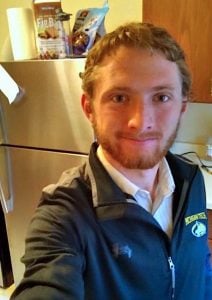 Kaelan Anderson’s research, Studying the Properties of Free Tropospheric Aerosols in the Mid Atlantic, was presented at Michigan Tech’s 2017 Undergraduate Research Symposium this past week. With the assistance of Claudio Mazzoleni, Anderson looked at if the long term research of atmospheric aerosols is necessary to accurately understand and predict a variety of atmospheric phenomena. A relevant example is black carbon, and its forcing effects on the climate.
Kaelan Anderson’s research, Studying the Properties of Free Tropospheric Aerosols in the Mid Atlantic, was presented at Michigan Tech’s 2017 Undergraduate Research Symposium this past week. With the assistance of Claudio Mazzoleni, Anderson looked at if the long term research of atmospheric aerosols is necessary to accurately understand and predict a variety of atmospheric phenomena. A relevant example is black carbon, and its forcing effects on the climate.
The Undergraduate Research Symposium highlights the amazing cutting-edge research being conducted on Michigan Tech’s campus by some of our best and brightest undergraduate students.
The students showcasing their work today have spent a significant portion of the past year working alongside Michigan Tech faculty and graduate students to explore, discover and create new knowledge. They’ve spent long hours in the lab or out in the field designing experiments, gathering data, creating new models and testing hypotheses. They’ve applied their classroom knowledge in new and sometimes unexpected ways, and developed new skills that will propel them forward in their careers.
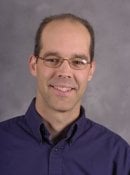 This week’s Dean’s Teaching Showcase recipient is Raymond Shaw from the Department of Physics, winner of the 2016 Michigan Tech Research Award. Shaw was selected by College of Sciences and Arts Dean Bruce Seely precisely because his efforts in the classroom forcefully demonstrate the unity of teaching and research and signal no necessary tension exists between these two core faculty responsibilities.
This week’s Dean’s Teaching Showcase recipient is Raymond Shaw from the Department of Physics, winner of the 2016 Michigan Tech Research Award. Shaw was selected by College of Sciences and Arts Dean Bruce Seely precisely because his efforts in the classroom forcefully demonstrate the unity of teaching and research and signal no necessary tension exists between these two core faculty responsibilities.
Seely says “That past fall, the Physics Department honored Ray for the Research Award in the manner it had recognized several other research award recipients — assigning them to teach a large lecture class. In Ray’s case, this was PH 2200, which covered electricity and magnetism for 390 students. He discovered large classes requires ‘one part professor and two parts theater director.’
“Fortunately, he enjoyed significant assistance from a demo crew that prepared attention-grabbing experiments suitable for classroom use, a dedicated assistant who managed iClicker content and online homework systems, the office staff that printed and organized 400 exam booklets every few weeks, and the physics learning center coaches who assisted students with homework and exams.
“At the end of the term, student evaluations ranked the class at 4.36 on the seven dimensions reported on the evaluation form. This is a very good score for a large introductory class.
“Ray identified several keys to this success, including support from Physics faculty, John Jaszczak, Wil Slough, and Bob Weidman, with extensive experience in large-lecture sections, who shared lecture materials and staging tips, and provided occasional pep talks. In addition, help from the testing center and IT staff members further confirmed that such courses are taught by a team, not just a professor.
“When asked about his contributions to making this class work, Ray noted that because big classes can seem impersonal, he ‘took it as a challenge to let my students get to know me as a person.’
“He spiced up lectures with personal anecdotes related to the course, like his rapidly-flashing blinker (RC time constants) or electromagnetic phenomena in his research. Other times he used more random elements related to life in general. He once asked students to provide iClicker responses on possible ways of disciplining his son for breaking the TV. (Corporal punishment won, but he did not take that advice) His point — students respond when taught by faculty who are real people and who care about them. As one student commented, ‘Every class was enjoyable due to the somewhat ‘nerdy’ humor followed by funny references to his son (absolutely hysterical).’
“But perhaps as important was Ray’s enthusiasm for the class. Students clearly recognized his passion and excitement about physics. One student said, ‘Your enthusiasm for Physics is inspiring. It makes the lectures much more enjoyable.’ Another added, ‘Your enthusiasm was great. You were always passionate and in a good mood.’
“This might not seem like rocket science, but teaching seems to work better in environments where faculty exhibit their enthusiasm about their field and show how they care about students and their learning.”
Shaw will be recognized at an end-of-term luncheon with 11 other showcase members, and is now eligible for one of three new teaching awards to be given by the William G. Jackson Center for Teaching and Learning this summer recognizing introductory or large class teaching, innovative or outside the classroom teaching methods, or work in curriculum and assessment.
by Michael Meyer, Director, William G. Jackson Center for Teaching and Learning
Miguel Levy (Physics/MSE) and Dolendra Karki (Physics) authored a paper published this month in Scientific Reports — Nature, entitled “Nonreciprocal Transverse Photonic Spin and Magnetization-Induced Electromagnetic Spin-Orbit Coupling.”
Will Cantrell, coordinator of the Summer Undergraduate Research Fellowship program, will conduct a workshop for students on the SURF application process, including writing an effective SURF proposal. The workshop will take place at 6 p.m. tomorrow (Jan. 12) in Fisher 130.
Faculty and staff are encouraged to notify students interested in applying for SURF funding to attend. This workshop will cover the same material as the one presented in December.
The deadline for SURF applications is 4 p.m. Jan. 27.